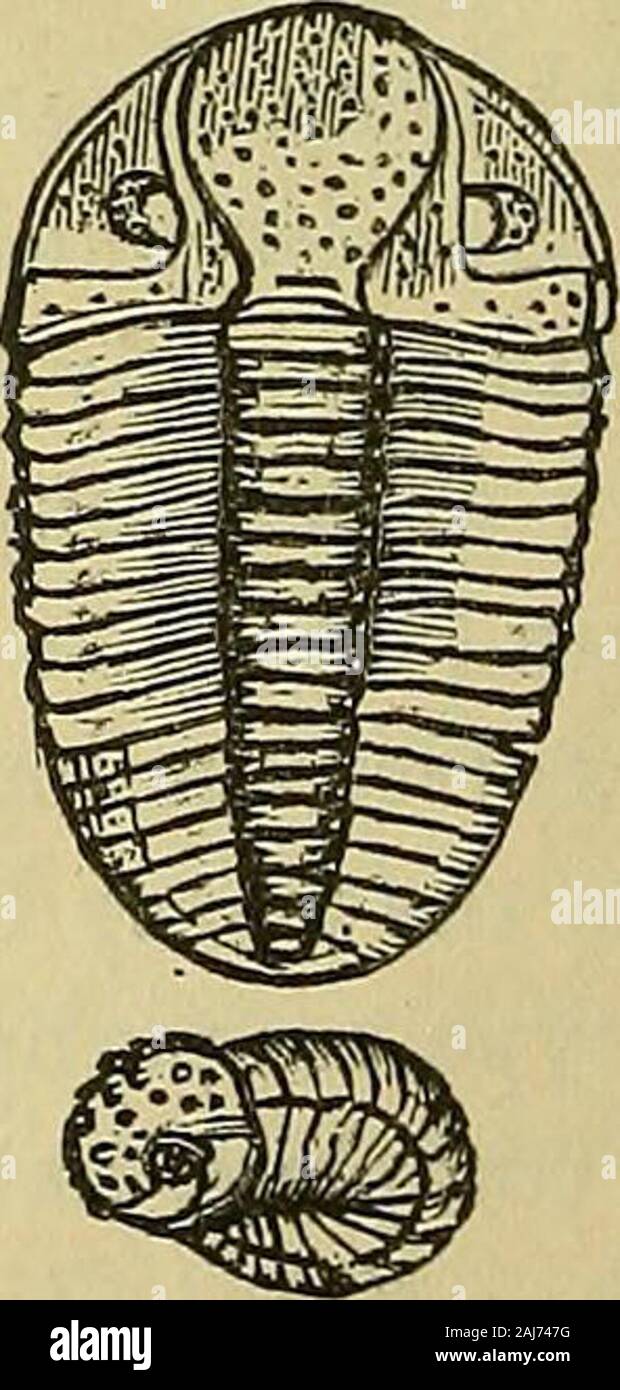The Canadian journal of industry, science and art . iddle andhigher parts of the lower series.Fig. 143 represents one of ourmost common species, from theTrenton and Hudson River groups.It is usually referred to IllcBnus crassicauda. A rolled-up ex-ample is shewn at a. JPhacops:—Glabella largely developed, expanded anteriorly, andoften granulated but not lobed. Facial-suturecutting the sides of the head-shield. Eyesstrongly reticulated. Head-angles and pleuraewith rounded ends. Body-rings eleven in num-ber. Pygidium with rounded or entire outline.Range of genus. Lower Silurian to Devonian.Phaco

Image details
Contributor:
The Reading Room / Alamy Stock PhotoImage ID:
2AJ747GFile size:
7.1 MB (334.9 KB Compressed download)Releases:
Model - no | Property - noDo I need a release?Dimensions:
1092 x 2288 px | 18.5 x 38.7 cm | 7.3 x 15.3 inches | 150dpiMore information:
This image is a public domain image, which means either that copyright has expired in the image or the copyright holder has waived their copyright. Alamy charges you a fee for access to the high resolution copy of the image.
This image could have imperfections as it’s either historical or reportage.
The Canadian journal of industry, science and art . iddle andhigher parts of the lower series.Fig. 143 represents one of ourmost common species, from theTrenton and Hudson River groups.It is usually referred to IllcBnus crassicauda. A rolled-up ex-ample is shewn at a. JPhacops:—Glabella largely developed, expanded anteriorly, andoften granulated but not lobed. Facial-suturecutting the sides of the head-shield. Eyesstrongly reticulated. Head-angles and pleuraewith rounded ends. Body-rings eleven in num-ber. Pygidium with rounded or entire outline.Range of genus. Lower Silurian to Devonian.Phacops hufo (fig. 144) from the Devonianbeds of Western Canada, is one of our mostcharacteristic and and best known species. Balmannites .-—Like Phacops, but with lobedglabella, head-angles extended into horns, andpointed or spinose pleurae. Pygidium also withmore or less spinose margin, or otherwise terminating in a point orspine. Fig. 145 represents Dalmannites limulurus from the Niagaragroup. The caudal spine, in many specimens, is broken ofi^.. rig. 144. •The caudal-shield referred to Dikelocephalus magnificus (Can. Nat., Vol. V, , p. 307) ap-pears to have equal if not greater claims to be placed under Ceraurus. MINERALS AND GEOLOGY OF CANADA. 31 The reader will find descriptions of variousfragmentary species in papers by Mr. Billings inthe fourth and fifth volumes of the CanadianNaturalist. He is referred also to that publi-cation for figures of less known or uncertainspecies of lUcenus and other forms of thisorder. Ceraurus.—This genus is the Cheirurus ofEuropean authors. It is more or less closelyallied to Dalmannites, but the eyes exhibit onlya delicate reticulation, and the pleurae have araised band on the surface, in place of a grooveas in the latter type. The glabella is large, and furrowed at thesides. The facial suture cuts the side of the head-shield. The anglesof the head terminate in points or horns. The pleurse are alsopointed ; and the caudal shield has a s